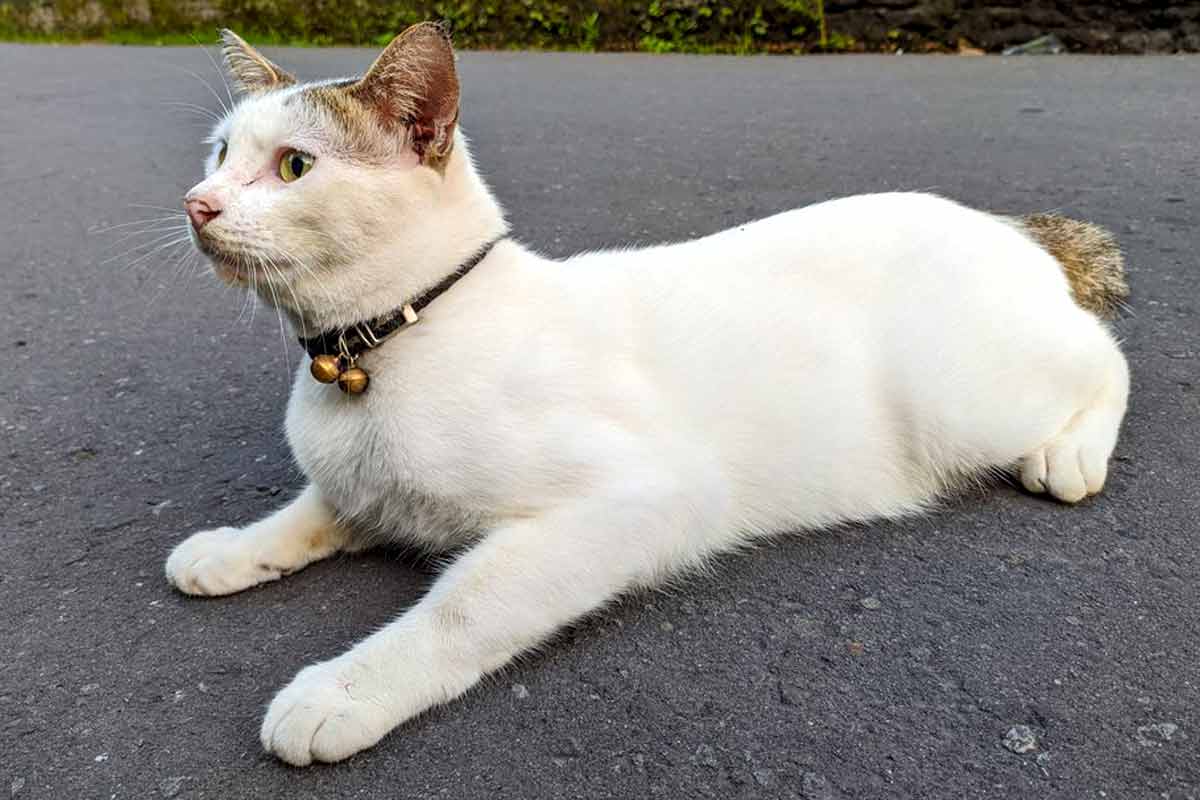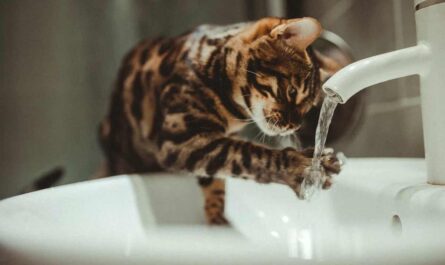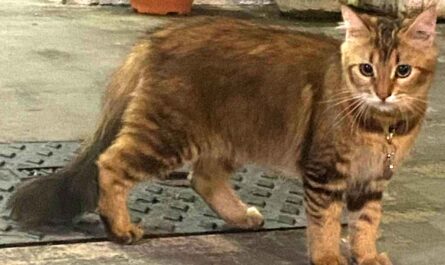Imagine this: a playful ball of fur, a tiny kitten full of life, chasing after a feathery toy with boundless energy. Suddenly, their playful spirit fades. Lethargy sets in, their bright eyes become dull, and their playful pounces are replaced by a concerning weakness. This dramatic shift could be a sign of distemper in cats, a deceptive illness that can strike quickly and leave cat owners feeling helpless.
This article delves into the world of feline distemper, also known as panleukopenia. We’ll explore the causes, symptoms, and treatment options for this serious illness, empowering you to protect your feline companion. But first, let’s clear up a common misconception: feline distemper is not the same as canine distemper. While they share the name, they are caused by entirely different viruses and pose unique threats to their respective furry friends.
A Deceptive Threat: Understanding Distemper in Cats
Just like a master of disguise can fool the unsuspecting eye, a feline distemper can lurk beneath the surface of a seemingly healthy cat. Here, we’ll unveil the true culprit behind this illness and explore its concerning characteristics.
Mistaken Identity: Canine Distemper vs. Feline Distemper
Don’t be fooled by the name! Feline distemper, also known as panleukopenia, is caused by the feline parvovirus – a completely different villain than the canine distemper virus that affects dogs. While both viruses cause serious illnesses, they are specific to their respective canine and feline hosts. So, if your dog has been vaccinated against distemper, you can rest assured that this doesn’t automatically protect your cat.
The Culprit Unveiled: The Feline Parvovirus
The tiny, yet mighty, feline parvovirus is the mastermind behind feline distemper. This highly contagious virus is incredibly resilient, able to survive in the environment for months on clothing, bedding, and surfaces. This means that even seemingly clean environments can pose a threat to unvaccinated cats.
Worldwide Woes: A Global Threat
Distemper in cats is a global concern, affecting cats of all ages and breeds. Unfortunately, unvaccinated cats are particularly susceptible to its wrath. This is why preventative measures like vaccination are crucial in safeguarding your feline friend’s health, especially if they spend time outdoors or interact with other cats.
Beyond Kittens: Vulnerability at Any Age
It’s a common misconception that feline distemper only targets kittens. While kittens are undeniably more vulnerable due to their undeveloped immune systems, even adult cats can fall victim to this illness if they haven’t been vaccinated. Cats living in shelters or multi-cat households are also at a higher risk due to increased exposure to the virus. By understanding the reach of feline distemper, we can take proactive steps to protect cats of all ages.
A Symphony of Distress: Recognizing the Signs of Distemper
Distemper, also known as feline panleukopenia, can be a frightening topic for cat owners. But knowledge is power! By understanding the signs of this illness, you can catch it early and get your feline friend the treatment they need. Here, we’ll explore the different ways distemper might manifest in your cat, helping you recognize the warning signals and take swift action.
Early Warning Signals: A Subtle Shift
Distemper’s initial symptoms can sometimes be vague, like a soft melody playing in the background. Your cat might seem a little less energetic than usual, lacking their usual playful spirit. Their appetite might dwindle, and they could develop a slight fever. These early signs might be easy to miss, but even a subtle shift in your cat’s behavior warrants a closer look.
Digestive Distress: A Rumbling Concerto
As distemper progresses, the symptoms can become more pronounced, like a discordant note disrupting the melody. Your cat might experience vomiting, which can be quite unpleasant for them. They might also develop diarrhea, which could be bloody in severe cases. These digestive issues can lead to dehydration, making your cat feel weak and lethargic. If you notice any of these signs, it’s crucial to seek veterinary attention promptly.
Weakened Defenses: A Vulnerable Chorus
Distemper attacks a cat’s white blood cells, the soldiers of their immune system. These cells are essential for fighting off infection. When their white blood cell count drops, your cat becomes more susceptible to secondary infections, adding to their woes. This is why early diagnosis and treatment are so important – they can help your cat fight off distemper and prevent further complications.
Variations on a Theme: Every Cat’s Song is Unique
It’s important to remember that distemper can affect cats differently. The severity of symptoms can vary depending on several factors, including the age and overall health of your cat, as well as the strain of the virus itself. Some cats might experience a milder form of the illness, while others might become quite sick. Regardless of the specific variation, any signs of illness warrant a trip to the vet.
By being attuned to the subtle changes in your cat’s behavior and recognizing the potential signs of distemper, you can ensure they receive prompt veterinary care and get back to their happy, healthy selves as quickly as possible. Remember, early detection is key!
Battling the Threat: Treatment Options for Distemper
Feline distemper, also known as Feline Panleukopenia Virus (FPLV), can be a frightening diagnosis for any cat owner. While there’s no magic cure that instantly banishes the virus, there are treatment options available to help your feline friend fight back. Here, we’ll explore the ways veterinarians can support your cat’s recovery, manage their symptoms, and give their body the best chance to overcome this illness.
A Harsh Reality: No Magic Bullet, But Hopeful Support
It’s important to understand that there isn’t currently a cure for feline distemper. However, this doesn’t mean there’s no hope. Veterinarians focus on providing supportive care, which plays a vital role in helping your cat’s body battle the virus and recover. Think of it as giving your cat’s natural defenses a helping hand.
Hydration Heroes: Combating Dehydration
Dehydration is a major concern with distemper, as vomiting and diarrhea can quickly rob your cat of essential fluids. Here’s where intravenous (IV) fluids come in like shining knights. These fluids are delivered directly into a vein, bypassing the digestive system, and ensuring your cat stays hydrated. This helps maintain their electrolyte balance, which is crucial for proper bodily functions.
Antibiotics in Action: Fighting Secondary Infections
Feline distemper can weaken your cat’s immune system, making them more susceptible to secondary bacterial infections. These infections can further complicate their recovery. In such cases, your veterinarian might prescribe antibiotics to target and eliminate these bacterial invaders, giving your cat’s body one less battle to fight.
Nutritional Support: Keeping Up Their Strength
Just like us, cats need proper nutrition to fight off illness. Distemper can make it difficult for them to eat or absorb nutrients. To address this, your veterinarian might recommend easily digestible food or nutritional supplements. These ensure your cat gets the essential vitamins, minerals, and calories they need to maintain their strength and support their healing process.
Symptomatic Relief: Easing Discomfort
Distemper can cause a range of unpleasant symptoms like vomiting, diarrhea, and fever. While the focus is on combating the underlying virus, there are medications available to help manage these symptoms and provide your cat with some much-needed relief. Anti-nausea medication can help settle their stomach, while anti-diarrheal medication can help solidify their stool. These measures can make your cat feel more comfortable and improve their overall well-being during recovery.
Remember, early detection and veterinary intervention are crucial for maximizing your cat’s chances of a full recovery from distemper. The sooner treatment begins, the better equipped your cat will be to fight the virus and bounce back to their playful, energetic self.
Other Interesting Articles
- How to Tell if Your Cat is in Pain after Surgery: How to Help
- How to Tell If Your Cat Loves You The Most: 23 Signs
- 20 Tips On How to Comfort A Scared and Frightened Cat
- 26 Signs Your Cat Can’t Breathe: A Guide to Help It Recover
- Cat Trilling Sound: What Does It Mean, How To Handle
- Cat Chattering Sound: What Does It Mean, How To Deal With
- How to Take Care of A Kitten 2 Months Old: Tips, Guide
- How to Feed A Newborn Kitten That Won’t Eat: 19 FAQs
- How to Care for Your Cat After Spaying or Neutering
- Cat Excessive Yowling: Why Cats Yowling: What You Can Do?
- How to Regain A Cat’s Trust after Hitting It: 16 Tips to Apply
- How to Tell If My Cat is in Pain after Spaying: How to Help
- How to Help Cats Get Along with Dogs: 17 Beginner’s Tips
- Keep Your Kids and Cats Safe: 15 Effective & Simple Tips
- How to Feed A Newborn Kitten: 30 Essential Tips for Beginners
- Do Cats Have Emotions Like Humans, Dogs? 10 Ways to Feel
- Petting A Scared Cat: 15 FAQs to Comfort A Fearful Cat
- 18 Implied Messages Your Cat Is Sending You With Its Tail
- How to Help Cats Get Along with Each Other: 14 Useful Tips
- 7 Causes of Cat Aggression: Biting, Fighting, Attacking




